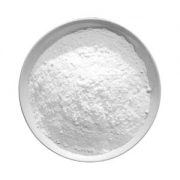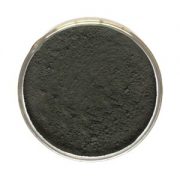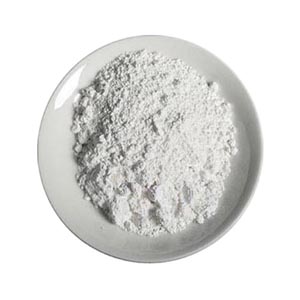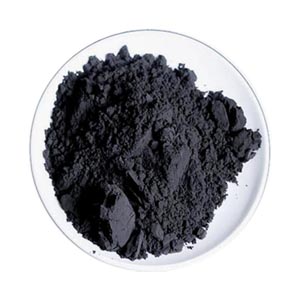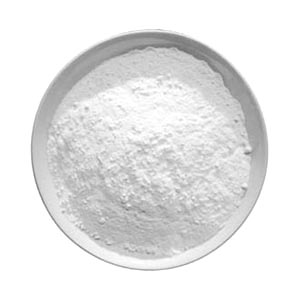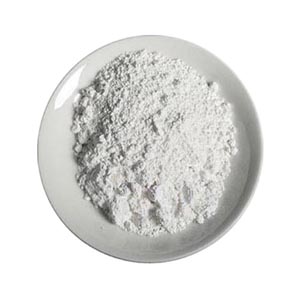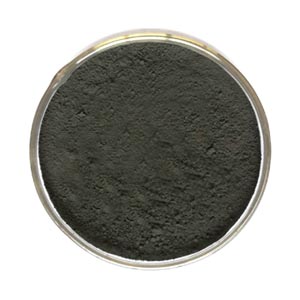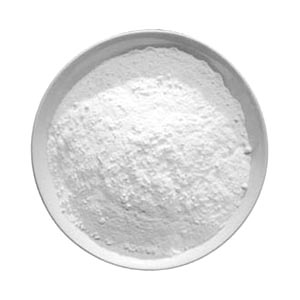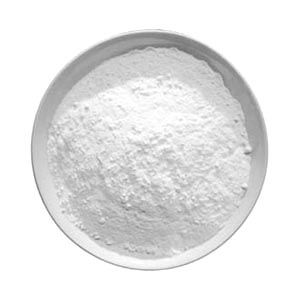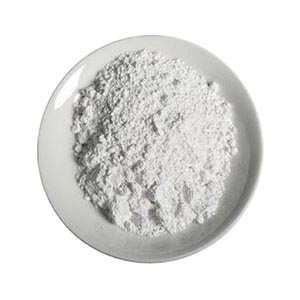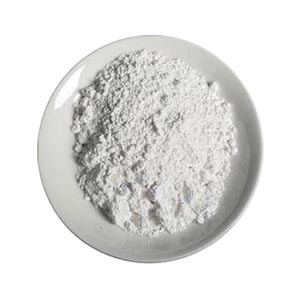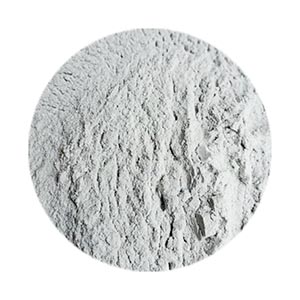
Conductive barium sulfate powder
Main chemical components: BaSO4, SnO2, Sb2O3
Electrical resistance, ω.cm, ≤50
Average grain diameter, 2um
Granular shape:Rhombic system, spherical
Vibration density,1.2 ~ 1.4 g/cm3
Specific surface area, 10 ~ 25m2/g
Physical properties,Tasteless, non-toxic, non-combustible
Chemical tolerance,Acid resistance, alkali resistance, light resistance, organic solvent resistance, no oxidation, flame retardant.
- 描述
- Inquiry
Conductive barium sulfate is based on precipitated barium sulfate as the substrate, and a conductive oxide layer is formed on the surface of the substrate by surface treatment and semiconductor doping treatment using nanotechnology, so as to prepare a new type of electronic conductive functional semiconductor coating (filler). Conductive barium sulfate powder has low oil absorption, less paint base consumption, good filling, leveling and impermeability, which can increase the hardness and wear resistance of the paint film, and is easy to mix and disperse with other pigments and paints, and can be made into a thick film conductive and anti-static coating. Used with other pigments, it can be made into a variety of colors such as near-white permanent conductive, anti-static anti-radiation products. Due to the small oil absorption, it is especially suitable for anti-static solvent-free epoxy floor and anti-static powder coating.
Conductive barium sulfate powder non-toxic and tasteless, acid, alkali, salt resistance, organic solvent resistance, light resistance, can effectively shield X-rays and gamma rays, effectively prevent and block radiation leakage, stable below 800℃, non-oxidation, non-flammable, and has flame retardant effect. It is suitable for almost any environment and occasion requiring conductive and anti-static electricity.
Conductive barium sulfate use method suggestions
The conductivity of conductive and antistatic materials is related to conductive fillers, matrix resins, auxiliaries, solvents and processing and preparation technology, and in coating system, it is also related to the electrical properties of coated objects. Under normal circumstances, when the amount of conductive barium sulfate added to the solvent coating is ~ 30%(weight percentage PWC), the coating resistivity can reach 106 ~ 107Ω·cm. The amount added in the anti-static powder coating is ~ 40%.
Conductive barium sulfate can be used alone or in combination with other conductive powders such as conductive mica powder. The filling structure of conductive packing has a direct effect on the conductivity, and the non-uniform structure has better conductivity than the uniform structure, which can be explained by the size of the contact area. In terms of the amount of conductive powder added, the electrical conductivity of the product increases with the increase of its added amount, when a certain amount is reached (called the critical addition amount or critical concentration), the electrical conductivity is the best, and then the electrical performance exceeds the stable change or decline.
When conductive barium sulfate is used in a non-polar system, it is best to moisten it with a solvent of similar polarity before stirring and dispersing, and then add the moistened slurry to the system for simple dispersion. The dispersion effect can be improved by increasing the stirring speed, adding dispersant, two-roll and three-roll grinding, etc. If dispersants are used, the dispersion time will be shortened. The shear force should not be too large during the dispersion process, otherwise the structure of the conductive powder will be damaged. In the use of ball milling, sand grinding means should be adjusted fineness, as far as possible to shorten the time, as far as possible to reduce the conductive powder structure damage.
When conductive barium sulfate is used with conventional pigment (filling) material, the conventional pigment (filling) material should first be pre-dispersed by conventional means, and then the conductive powder should be added by simple dispersion. Thixotropic agents (such as hydrogenated castor oil derivatives, organic modified bentonite, ultra-fine SiO2, etc.) should be added to the coating to improve the settlement resistance of the conductive powder. If the settlement cannot be avoided, flocculants (such as Terrg-P, Anti-RRA-203, Texaphor-963, etc.) can be added to control the settlement, and can be dispersed by simple stirring.
相关产品
-
Calcium tungstate
Other name: calcium wolframate, Calcium orthotungstate
CAS no. : 7790-75-2
EINECS no. : 232-219-4
Molecular formula: CaO4W
Molecular weight: 287.9156
Character white powder.
Melting point is 1580 ℃
Relative density 5.98g/cm3
Insoluble in water. -
Strontium nitride
Other name: tristrontium nitride
CAS Number: 12033-82-8
Chemical formula: Sr3N2
Molecular weight: 290.88
EINECS number: 234-795-2Product features:
Strontium nitride ceramic powder with high purity, small particle size and uniform distribution is one of the main raw materials of nitride phosphor, and has a very wide range of applications in the optoelectronics industry. -
Nano Magnesium Carbonate
Other name: Magnesite, Magnesium carbonate anhydrous
CAS no. : 546-93-0; 13717-00-5
EINECS no. : 208-915-9
Molecular formula: MgCO3
Molecular weight: 84.31
-
Barium titanate micron and nano powder
Other name: barium titanium trioxide; Barium titanium oxide
Particle size: 0.8-2um, 500nm, 20nm
Appearance: white powder
( micron grade )Water content (wt %):<0.3
( micron grade ) Calcination reduction (wt %) :<0.5 -
Strontium titanate powder
English alias: strontium titanium trioxide; strontium dioxido(oxo)titanium; Barium strontium titanate
CAS no. : 12060-59-2
EINECS no. : 235-044-1
Molecular formula: O4Sr2Ti
Molecular weight: 287.1046
Melting point: 2060 ℃
Grain size: 0.5—2um
-
Magnesium boride MgB2
Other name: magnesium diboride
Molecular formula: MgB2
Purity: 99%
Appearance: Gray-black powder
Particle size: 325mesh
Density: 2.57 g/cm3
Molecular weight: 45.93
Melting point: 830℃ -
Nano magnesium fluoride powder
Other name:magnesium difluoride
CAS number: 7783-40-6
Molecular formula: MgF2Appearance: Light grey powder
Particle size:30-50nm
Specific surface area:50-100m2/g -
Barium dimetaphosphate
Other name: Barium metaphosphate
CAS no. : 13762-83-9
Molecular formula: BAO6P2
EINECS no. : 237-362-6
Molecular Weight: 295.2709 -
Magnesium oxide nano powder
Products feature:
Small size, high purity, easily to disperse.
Excellent electrical insulating property.
Good antibacterial effect.
Effectively improve the durable temperature performance of dope.
-
Strontium acetate
Other name: Strontium diacetate
CAS no. : 543-94-2
EINECS no. : 208-854-8
Molecular formula: C2H4O2·1/2Sr
Molecular weight: 146.6635

